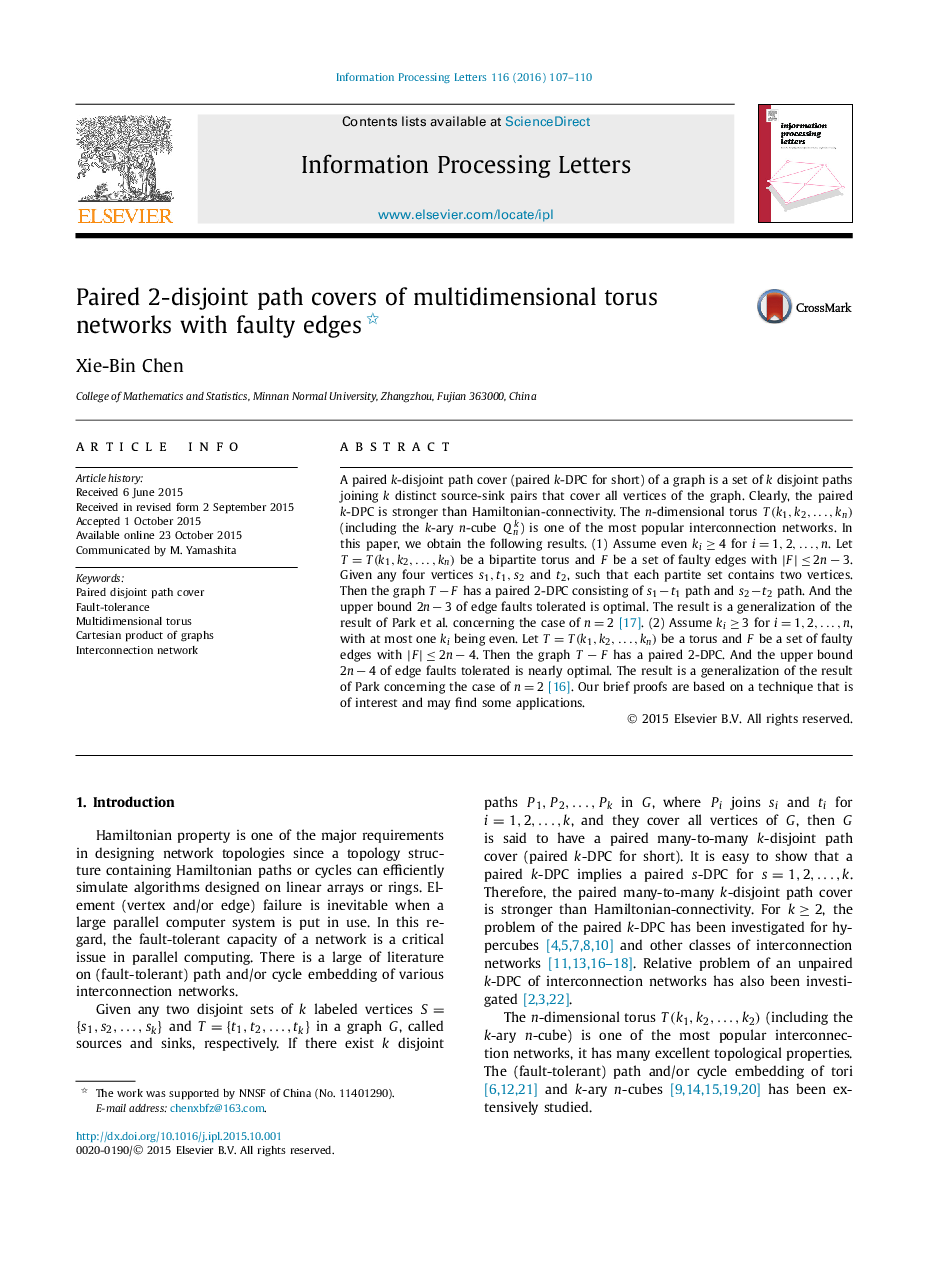| Article ID | Journal | Published Year | Pages | File Type |
|---|---|---|---|---|
| 10331031 | Information Processing Letters | 2016 | 4 Pages |
Abstract
A paired k-disjoint path cover (paired k-DPC for short) of a graph is a set of k disjoint paths joining k distinct source-sink pairs that cover all vertices of the graph. Clearly, the paired k-DPC is stronger than Hamiltonian-connectivity. The n-dimensional torus T(k1,k2,â¦,kn) (including the k-ary n-cube Qnk) is one of the most popular interconnection networks. In this paper, we obtain the following results. (1) Assume even kiâ¥4 for i=1,2,â¦,n. Let T=T(k1,k2,â¦,kn) be a bipartite torus and F be a set of faulty edges with |F|â¤2nâ3. Given any four vertices s1,t1,s2 and t2, such that each partite set contains two vertices. Then the graph TâF has a paired 2-DPC consisting of s1ât1 path and s2ât2 path. And the upper bound 2nâ3 of edge faults tolerated is optimal. The result is a generalization of the result of Park et al. concerning the case of n=2[17]. (2) Assume kiâ¥3 for i=1,2,â¦,n, with at most one ki being even. Let T=T(k1,k2,â¦,kn) be a torus and F be a set of faulty edges with |F|â¤2nâ4. Then the graph TâF has a paired 2-DPC. And the upper bound 2nâ4 of edge faults tolerated is nearly optimal. The result is a generalization of the result of Park concerning the case of n=2[16]. Our brief proofs are based on a technique that is of interest and may find some applications.
Related Topics
Physical Sciences and Engineering
Computer Science
Computational Theory and Mathematics
Authors
Xie-Bin Chen,
